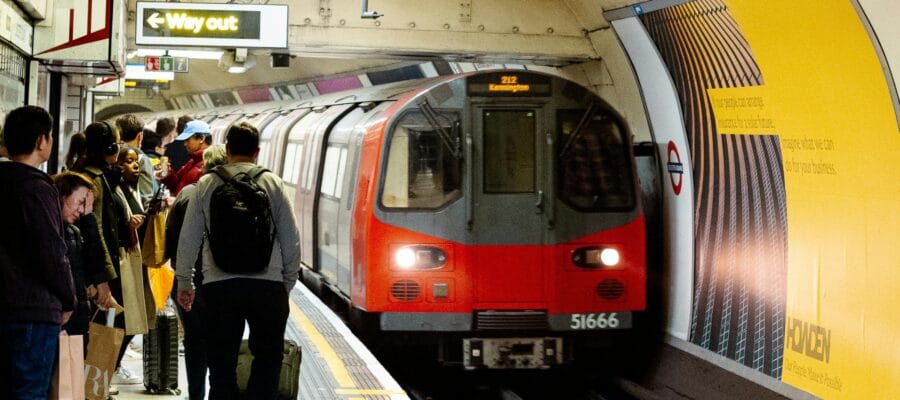Public transportation is often a more economical choice compared to private vehicles. With rising fuel prices and maintenance costs, many commuters are looking for ways to save money. Utilizing buses, trains, and subways can significantly reduce your daily expenses. This post will explore the financial advantages of public transit and provide practical tips to maximize your savings. By understanding these benefits, you can make informed decisions about your travel options.
Jump to...
Lower Fuel Costs
One of the most significant expenses of private transportation is fuel. Public transportation systems operate on a larger scale, distributing fuel costs across many passengers.
Pros: This shared cost model allows individual riders to pay only a fraction of what they would spend on gas for their own vehicle. Additionally, many public transit systems use fuel-efficient vehicles.
Cons: The convenience of having a personal vehicle may be lost, especially in areas with limited public transit options.
For more information on fuel efficiency in public transit, visit APTA.
No Maintenance Expenses
Owning a car comes with various maintenance costs, including oil changes, tire rotations, and repairs. Public transportation eliminates these expenses entirely for riders.
Pros: By using public transit, you save money on routine maintenance and unexpected repairs that can arise with car ownership. This can lead to substantial long-term savings.
Cons: You may have less flexibility in your schedule compared to driving your own car.
Learn more about the costs of car maintenance at Edmunds.
No Insurance Premiums
Car insurance is another significant cost associated with private transportation. Public transportation users do not need to worry about monthly insurance premiums.
Pros: This can lead to considerable savings, especially for younger drivers or those living in high-risk areas where insurance rates are elevated. Public transit riders can allocate their funds elsewhere.
Cons: Riders must rely on public schedules and routes, which may not always align with their personal needs.
For insights on car insurance costs, check out Nationwide.
Reduced Parking Fees
Parking fees can add up quickly for private vehicle owners. Many urban areas charge high rates for parking spaces, which can be avoided by using public transportation.
Pros: By opting for public transit, you save money that would otherwise go toward parking fees or fines for parking violations. This is especially beneficial in crowded city centers.
Cons: Public transportation may not always drop you off directly at your destination, potentially requiring additional walking or transfers.
Explore parking costs in your area with resources like Parking.com.
Monthly Passes
Many public transportation systems offer monthly passes that allow unlimited travel for a fixed fee. These passes can lead to significant savings if you use public transit frequently.
Pros: Monthly passes often cost less than buying individual tickets or fares for each trip. They also provide the convenience of not having to purchase a ticket every time you travel.
Cons: If you don’t use public transportation regularly, the upfront cost may not be worth it.
Check your local transit authority’s website for details on monthly passes at APTA.
Discounts for students, seniors, etc…
Many transit systems offer discounts for students, seniors, and people with disabilities. These discounts can significantly reduce the cost of travel.
Pros: Discounts make public transportation more accessible and affordable for eligible riders. It’s a great way to save money if you qualify.
Cons: You may need to provide proof of eligibility, which can be an inconvenience for some users.
Visit your local transit authority’s website to learn about available discounts and eligibility requirements.
Real-Time Information
Many cities have mobile apps that provide real-time information about public transportation schedules and routes. Using these apps can help you plan your trips more efficiently.
Pros: Real-time updates can help you avoid long waits and missed connections, saving both time and money. You can also find the quickest routes to your destination.
Cons: Relying on technology means you need a smartphone and data access, which may not be available to everyone.
Explore popular transit apps like Google Maps for navigation assistance.
Travel Times Optimization
If possible, try to avoid traveling during peak hours when fares may be higher or when services are crowded. Traveling during off-peak times can enhance your experience and save you time (time is money).
Pros: Off-peak travel often means less crowded vehicles, making for a more comfortable journey. Additionally, some transit systems offer reduced fares during these times.
Cons: This strategy may not be feasible for everyone due to work or school schedules.
Check your local transit authority’s website for peak hour information at Transit DOT.
Conclusion on Taking Public Transportation
In conclusion, public transportation offers numerous financial benefits that make it a smarter choice for many commuters. By eliminating costs associated with fuel, maintenance, and insurance, you can save a substantial amount over time. Additionally, taking advantage of discounts and passes can further enhance your savings. Implementing tips such as planning your routes wisely and traveling during off-peak hours will help you get the most out of your public transit experience. Embracing public transportation not only saves money but also contributes to a more sustainable environment.
